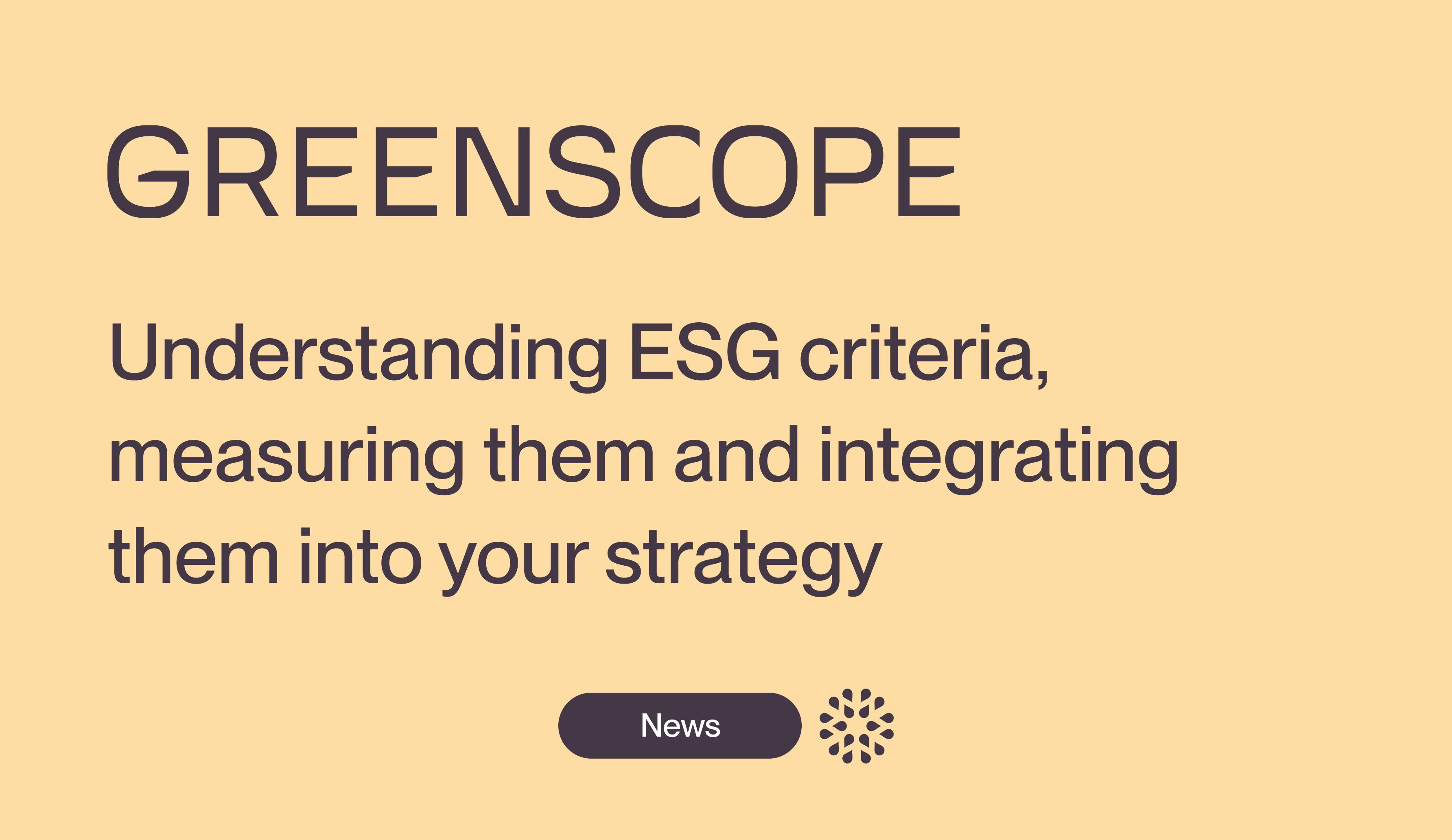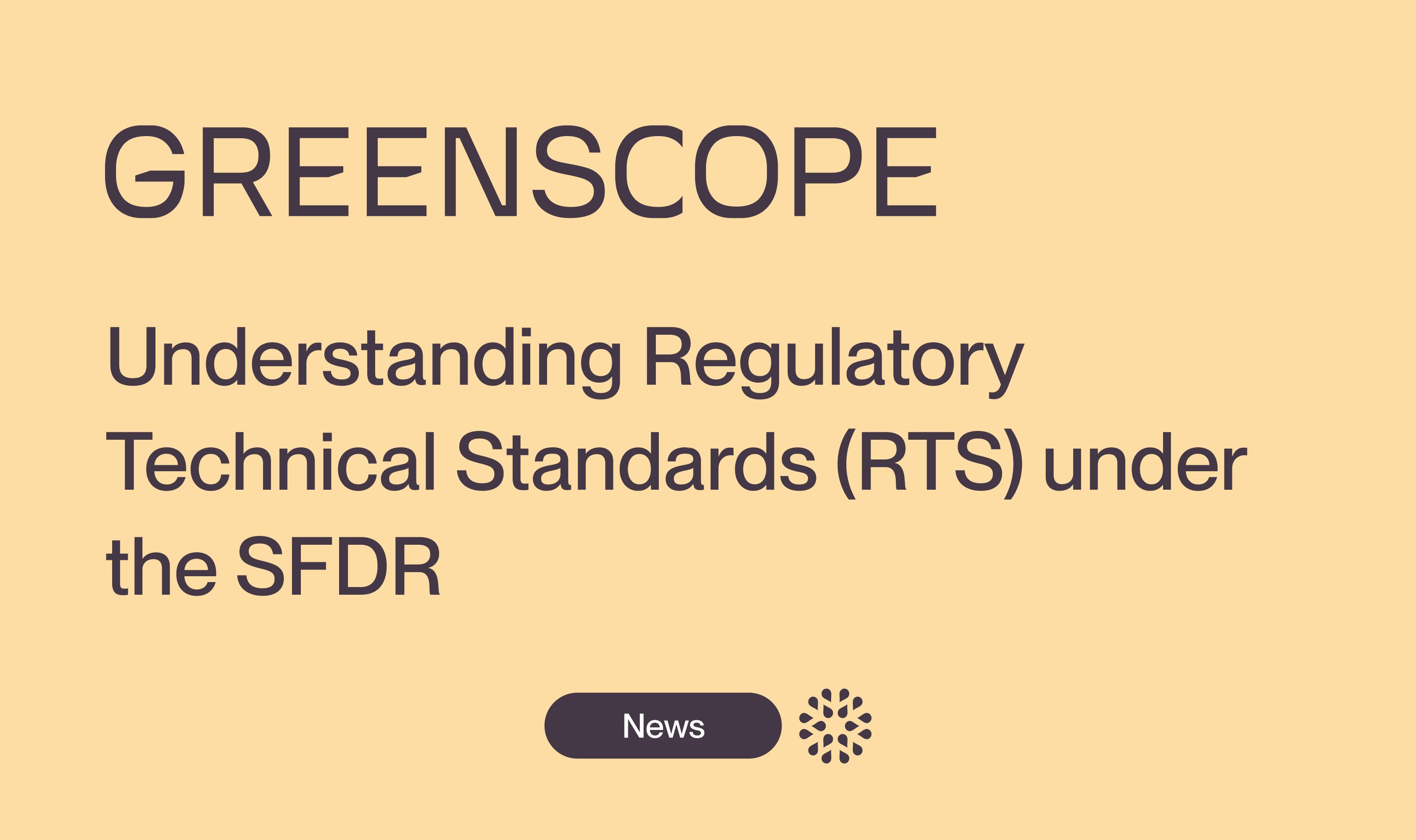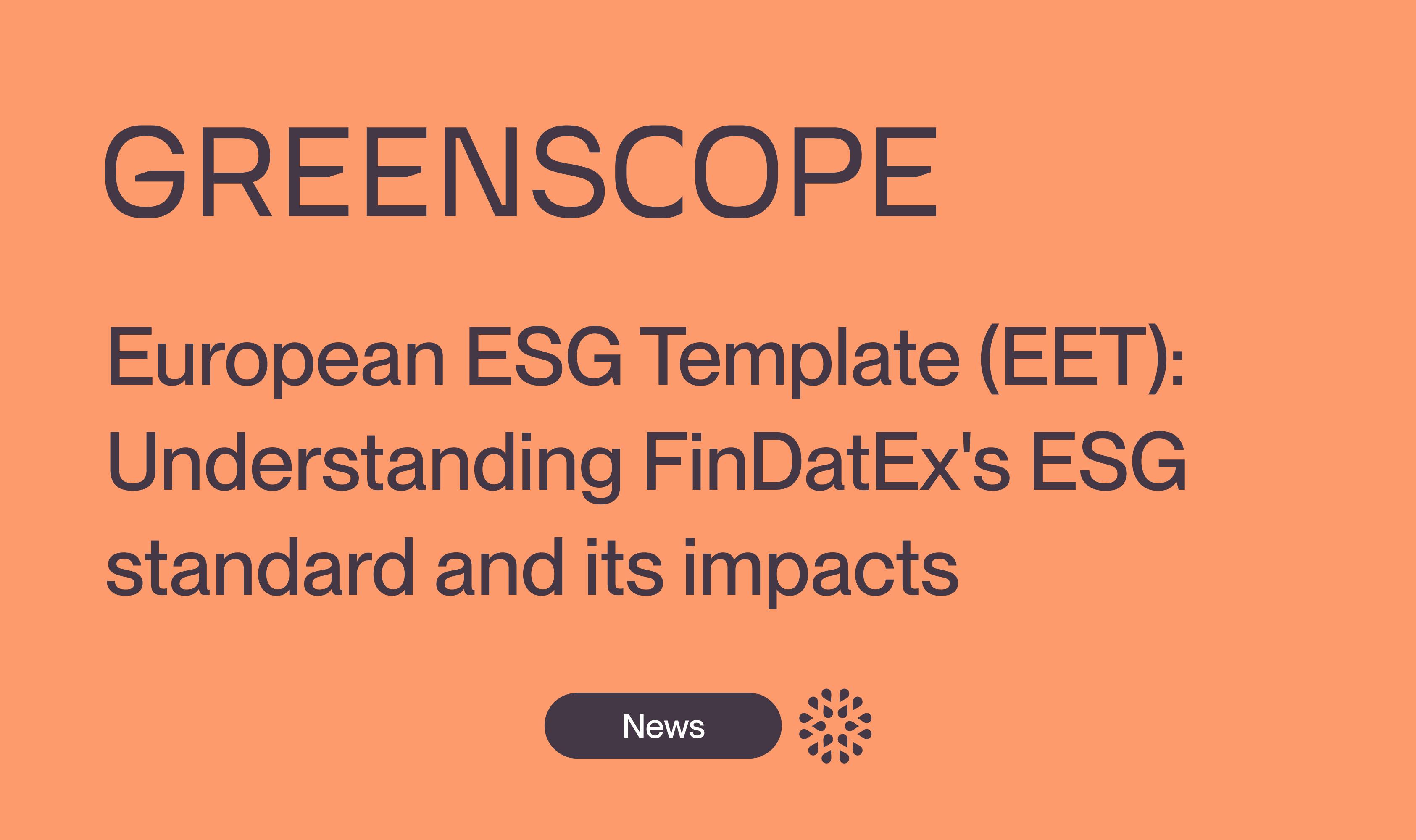Understanding and measuring ESG criteria to integrate them into your strategy
Understand ESG criteria and learn how to assess them in order to structure a responsible, high-performance corporate strategy

ESG criteria serve as benchmarks for responsible investments, demonstrating companies' contributions to environmental, social, and governance aspects. Companies that integrate these criteria become key players in sustainable investment and set the standard for other companies to combine resilience and financial performance. A survey conducted by PwC in December 2023 showed that 69% of fund managers consider ESG criteria essential for creating value in their investment strategy*.
What are ESG criteria?
Definition of ESG criteria
Environmental, Social, and Governance (ESG) criteria allow evaluation of a company's CSR approach. These are indicators that enable investors to analyze the extra-financial performance of companies.
The history of ESG criteria
Socially responsible investing (SRI) emerged as early as the 1970s, but ESG practices did not gain widespread acceptance until the 1990s in investment strategies. The term ESG became official in 2004 with an explanation of the various criteria to be integrated into business activities. These criteria are based on three components: Environment, Social, and Governance. ESG criteria evolve with the growing environmental awareness and societal expectations concerning ethics and social issues. The strengthening of regulations has also prompted companies to adopt more responsible practices.
The importance of ESG criteria
Measuring these ESG criteria helps increase performance and enhance image with investors. Indeed, an ESG approach creates value and strengthens competitiveness. ESG criteria build trust by allowing transparency and pave the way for a proactive approach to risk mitigation. Thus, integrating these criteria stands as a genuine strategic investment.
What are the 3 pillars of ESG criteria?
There are a significant number of criteria for the 3 pillars of ESG. However, not all criteria are always relevant to follow and should be adjusted according to the industry sector, the company's size, its geography, etc.
Environmental criteria
Environmental criteria allow for the assessment of a company's impact on the natural ecosystem and the environmental risks it faces. They particularly correspond to:
- Combating climate change: reducing greenhouse gas emissions by using more renewable energy, optimizing energy efficiency, and meeting carbon neutrality goals
- Waste and resource management: implementing waste reduction policies, recycling, and circular economy initiatives to limit the exploitation of natural resources
- Pollution prevention: measures aimed at limiting air, soil, and water pollution through control technologies, cleaner industrial processes, and compliance with environmental regulations
- Biodiversity protection: actions to preserve ecosystems, restore natural habitats, and support species conservation initiatives
Social criteria
Social criteria assess how a company interacts with its stakeholders – employees, customers, suppliers, and local communities. They aim to ensure an inclusive, ethical work environment that respects human rights while having a positive societal impact. Social criteria particularly concern:
- Respect for human rights: ensuring that all individuals, internal and external to the company, are treated equitably and ethically by combating forced labor, child labor, and discrimination
- Working conditions and social dialogue: ensuring decent working conditions, fair wages, and measures to ensure health, safety, and well-being while respecting social dialogue standards
- Diversity and inclusion: promoting equal opportunities by ensuring gender parity, integrating people with disabilities, and valuing cultural and social diversity within teams
- Data protection and privacy: implementing robust cybersecurity policies to secure employees' and customers' personal information, in compliance with current regulations (like GDPR)
Governance criteria
The governance requirements of ESG criteria focus on transparency, ethics, and a company's decision-making structure. Among them, we notably find:
- Fighting corruption and fraudulent practices: establishing strict policies and procedures to prevent corruption, blackmail, and money laundering in compliance with current regulations
- Transparency and equity in executive compensation: adopting fair and transparent compensation policies aligned with company performance and stakeholder expectations
- Balanced governance and decision making: ensuring a transparent and effective relationship between shareholders, management, and the board of directors, promoting a management team with diverse skills and experiences for better decision-making
What is the difference between ESG criteria and ESG indicators?
- ESG criteria represent qualitative areas that your company must integrate into its overall strategy. They serve as a foundation for assessing corporate practices and guiding decision-making. These criteria are often translated into broad objectives, such as achieving gender equality or carbon neutrality, which steer long-term decisions.
- ESG indicators, on the other hand, are specific quantitative or qualitative measures used to evaluate the company's actual performance on these criteria. For example, the criterion "gender equality" becomes measurable through the indicator "percentage of women in management positions", allowing for a precise assessment of progress toward that goal.
ESG criteria correspond to general qualitative areas your company should integrate into its strategy, such as:
- gender equality
- reduction of CO₂ emissions
- transparency in governance
ESG criteria | Associated ESG indicators |
|---|---|
ENVIRONMENTAL | |
Climate change mitigation | • CO₂ emissions (tons per €M in revenue) |
Natural resource management | • Water consumption (m³) |
SOCIAL | |
Equality and Diversity | • % of women in management positions |
Employee well-being | • Workplace accident rate |
GOVERNANCE | |
Transparency and governance | • % of independent board members |
Ethics and compliance | • % of employees trained on ethics and compliance |
What is the role of data in ESG criteria?
Data plays an essential role in the assessment and implementation of ESG criteria. It enables companies to measure their impact, identify areas for improvement, and ensure transparency to investors and stakeholders.
- Monitoring and reporting: Collecting and analyzing ESG data allows for assessing a company's performance on key indicators (CO₂ emissions, parity, regulatory compliance, etc.)
- Decision-making support: Accurate and updated data enable leaders to adjust their strategies according to ESG objectives
- Transparency and compliance: Regulators and investors increasingly demand companies to publish verifiable ESG data
- Risk and opportunity assessment: By leveraging quality ESG data, companies can better anticipate risks and identify competitive advantages
Why should a company consider ESG criteria?
Integrating ESG criteria has become a strategic issue for companies, allowing them not only to meet stakeholder expectations but also to enhance their resilience and competitiveness.
- Easier access to financing and investors: Investors are increasingly favoring companies engaged in an ESG approach. A good ESG rating attracts capital, grants access to green financing, and offers more favorable credit conditions
- Reduction of operational and legal risks: By anticipating regulatory changes and adopting sustainable practices, a company limits sanctions, litigations, and disruptions (pollution, working conditions, governance, etc.)
- Greater attractiveness for talent: New generations of employees seek companies aligned with their values. A strong ESG commitment enhances the employer brand
- Improvement of brand image and customer relationship: Consumers are increasingly attentive to brands' environmental and social commitments
- Competitive advantage and anticipation of regulations: By integrating sustainable practices now, companies position themselves as leaders in their sector and foresee future regulatory obligations, thus avoiding sudden significant investments
How to integrate ESG criteria into a company's strategy?
Various actions allow incorporating ESG criteria into a company's strategy:
- Define ESG objectives and identify priorities: The first step is to conduct a materiality analysis, which identifies the most relevant ESG issues based on the sector and activities of the company, taking into account the impact of a company's activities on society (impact materiality) as well as the impact of ESG issues on its financial performance (financial materiality). These priorities must be clearly defined and included in a comprehensive ESG strategy
- Appoint an ESG leader or team: To ensure effective coordination, it is essential to appoint an ESG leader or form a dedicated team. A specific budget should also be allocated to ensure the success of initiatives
- Implement concrete actions aligned with objectives: this involves adopting suitable policies, such as conducting a carbon footprint assessment, establishing a diversity and inclusion policy, or creating a committee dedicated to transparency and ethics in business.
- Measure ESG performance and communicate results: A regular follow-up of ESG indicators is essential to evaluate the effectiveness of the implemented actions. ESG reporting plays a key role here, allowing the company to report its progress and establish a trust-based relationship with stakeholders.
How to measure ESG criteria?
Measuring ESG criteria is based on several approaches to evaluate the company's performance:
- Analysis of non-financial risks: This analysis allows anticipation and prevention of ESG risks that could impact the company. Companies can rely on an ESG risk mapping, which involves identifying, assessing, and prioritizing them according to their probability of occurrence and potential impact. For more information, see our article on ESG risks.
- Evaluation by ESG score: This refers to a rating given by rating agencies (MSCI, Sustainalytics, ISS ESG, Moody's ESG, etc.) based on a company's performance in the three ESG pillars. It is based on: the collection and analysis of sustainability data, rating of ESG performance according to specific criteria, and comparison with industry standards and investor requirements.
This score allows companies to track their progress in sustainability and improve their attractiveness to investors and financial partners.
- Comparative impact analysis: This analysis evaluates a company's ESG performance by comparing it with that of its competitors or industry standards. It can be done in various ways, such as comparing performance against sectoral goals (e.g., reducing emissions by 50% by 2030 for industrial companies) or identifying the company's strengths and weaknesses compared to competitors. Companies can also analyze competitors' ESG strategies to identify best practices.
To measure their ESG criteria, companies can conduct internal or external audits and use ESG software.
Are there standards and labels certifying compliance with ESG criteria?
Several standards and labels have been established to certify the ESG compliance of companies and investment funds.
ESG reporting standards include, among others:
- Global Reporting Initiative (GRI): an international framework allowing companies to publish a sustainability report on their economic, environmental, and social impact.
- Sustainability Accounting Standards Board (SASB): a standard focused on financial materiality, providing sector-specific indicators to help companies communicate on ESG risks and opportunities.
- Task Force on Climate-related Financial Disclosures (TCFD) : recommendations for companies and investors to integrate climate-related risks and opportunities into their strategies and financial reporting.
To learn more about these standards, feel free to read our dedicated article.
There are also ESG labels in France such as ISR or Greenfin and in Europe such as Towards Sustainability. An article dedicated to labels analyzes these criteria in more detail.
Integrating ESG criteria is a powerful lever to strengthen the resilience and competitiveness of your company. Need support in structuring your ESG strategy or implementing reporting that complies with regulations? Contact us now to benefit from personalized expertise and align your company with ESG issues.
*PWC study from December 2023: More than two-thirds of investors place great importance on ESG in their investment strategy to create value
Our latest articles

Understanding the Regulatory Technical Standards (RTS) under SFDR
Everything you need to know about the RTS SFDR: content, obligations, developments, and challenges for financial professionals

Everything you need to know about the GRI sector standards for financial services
Discover the new GRI Sector Standards for banking, capital markets, and insurance

CSR News - September 2025
Discover key developments: ongoing projects, standards updates, new official documents.

European ESG Template (EET): Understanding FinDatEx's ESG Reporting Standard and Its Impacts
One standard, five regulations, hundreds of ESG data points: discover why EET has become essential for sustainable finance stakeholders.



